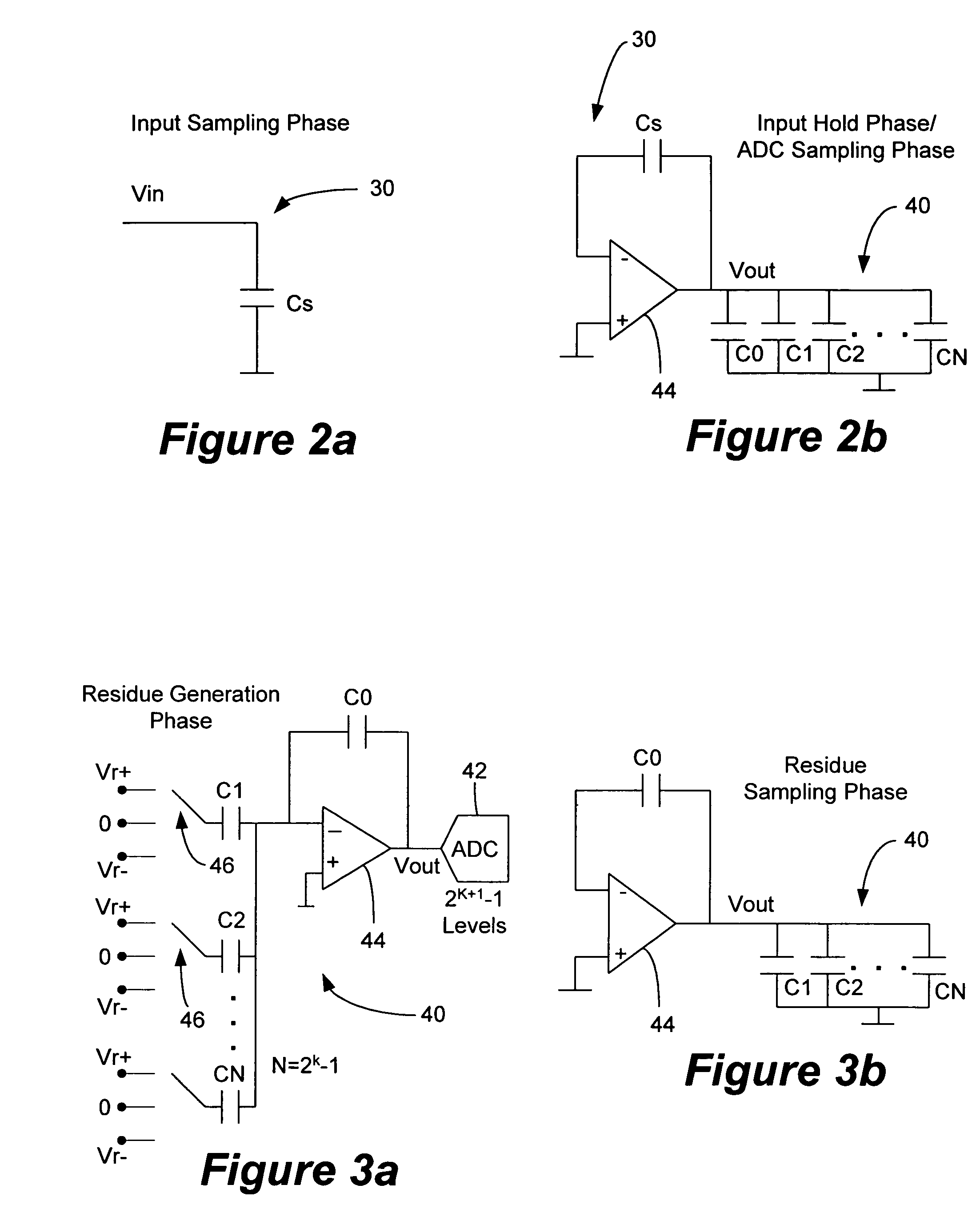Architecture for an algorithmic analog-to-digital converter
an algorithmic converter and architecture technology, applied in the direction of code conversion, generating/distributing signals, instruments, etc., can solve the problems of low power consumption, slow conversion cycle, and relatively long conversion cycle, and achieve the effect of improving area efficiency and suitably high conversion ra
- Summary
- Abstract
- Description
- Claims
- Application Information
AI Technical Summary
Benefits of technology
Problems solved by technology
Method used
Image
Examples
Embodiment Construction
[0036]The present invention provides an algorithmic analog-to-digital converter (ADC) having an improved area efficiency and a conversion rate suitably high for high speed and bit resolution applications such as video ADC. It is area efficient because it contains only one processing unit and has a heavily serial operation principle. By contrast, existing algorithmic ADCs have at least two processing units. The higher conversion rate is achieved by processing multiple bits in each cycle. The processing unit, which employs a switched capacitor topology, resembles a multi-bit stage in a pipelined ADC.
[0037]Overview
[0038]The architecture comprises a sample-and-hold circuit and a multi-bit serial ADC processing unit (the processing unit, in turn, comprises a multiplying digital-to-analog converter (MDAC) and a sub-ADC). These two circuits work in parallel and share a single operational amplifier. As depicted in FIG. 1, the sample-and-hold circuit works at the sampling rate with uneven du...
PUM
 Login to View More
Login to View More Abstract
Description
Claims
Application Information
 Login to View More
Login to View More - R&D
- Intellectual Property
- Life Sciences
- Materials
- Tech Scout
- Unparalleled Data Quality
- Higher Quality Content
- 60% Fewer Hallucinations
Browse by: Latest US Patents, China's latest patents, Technical Efficacy Thesaurus, Application Domain, Technology Topic, Popular Technical Reports.
© 2025 PatSnap. All rights reserved.Legal|Privacy policy|Modern Slavery Act Transparency Statement|Sitemap|About US| Contact US: help@patsnap.com



